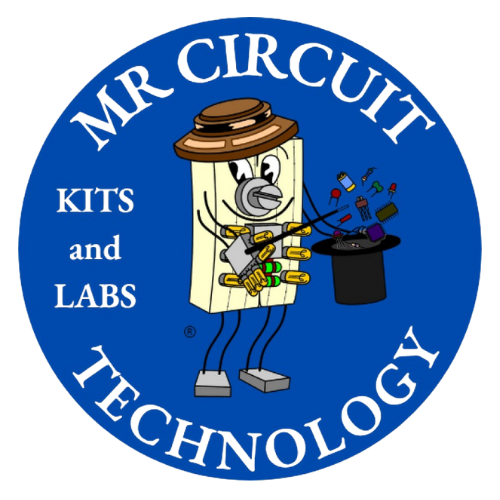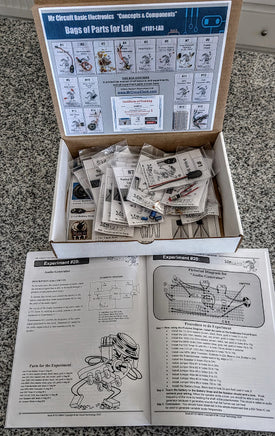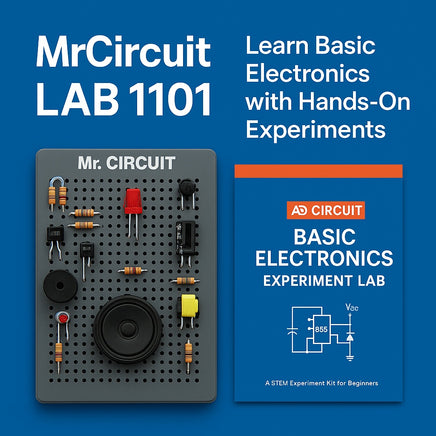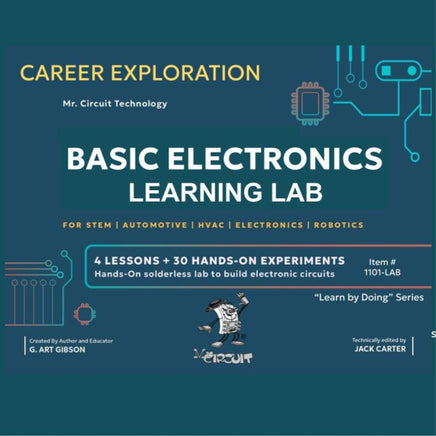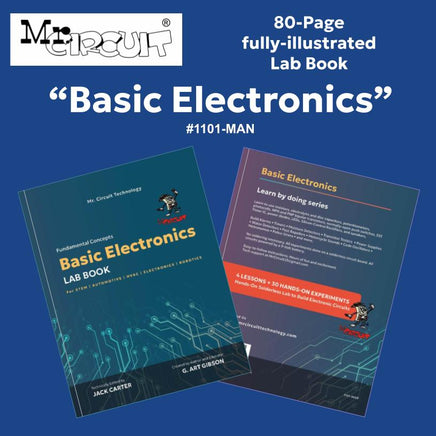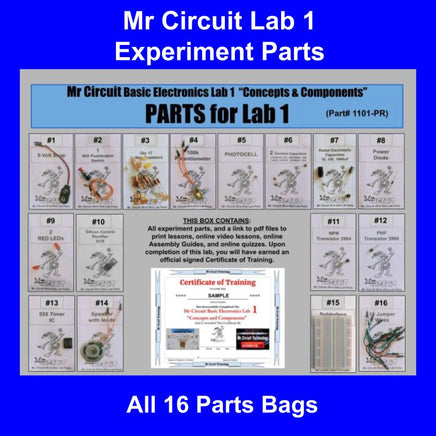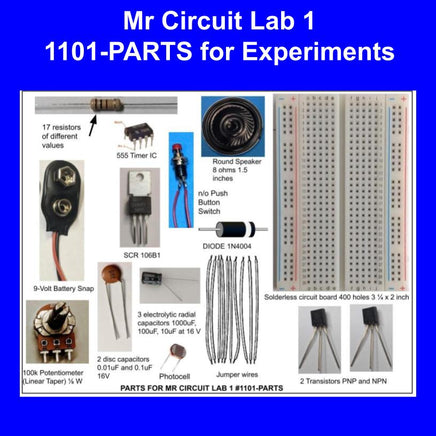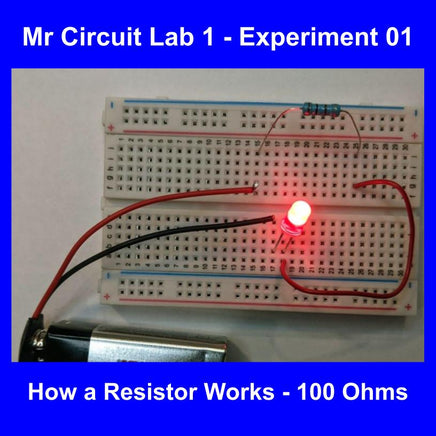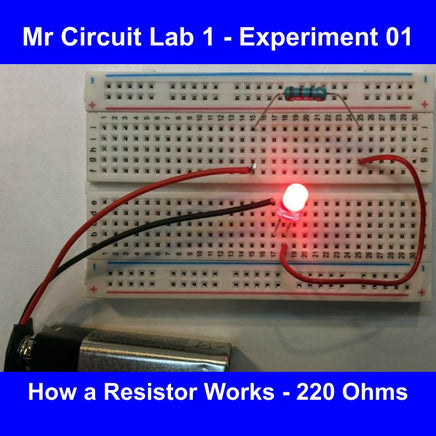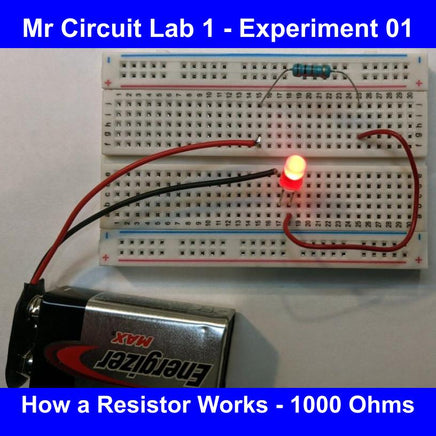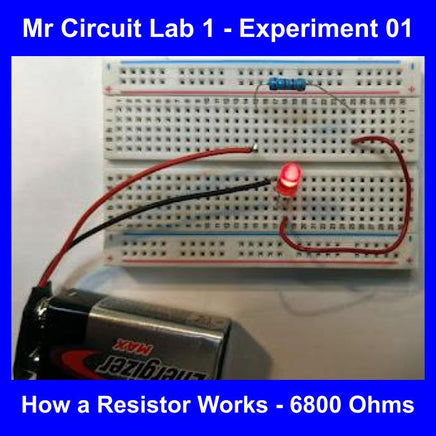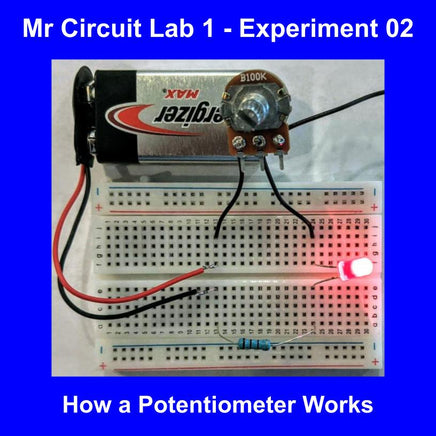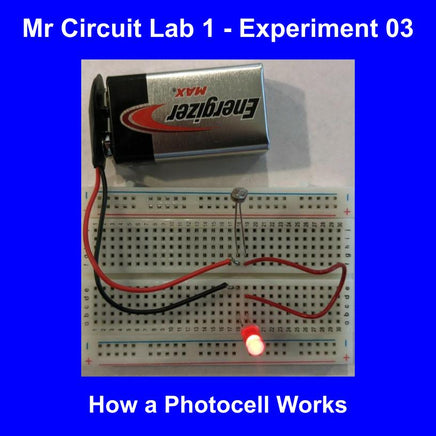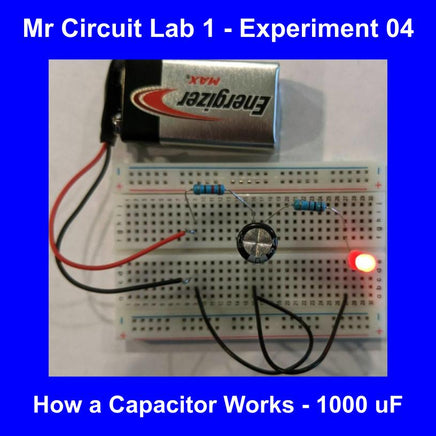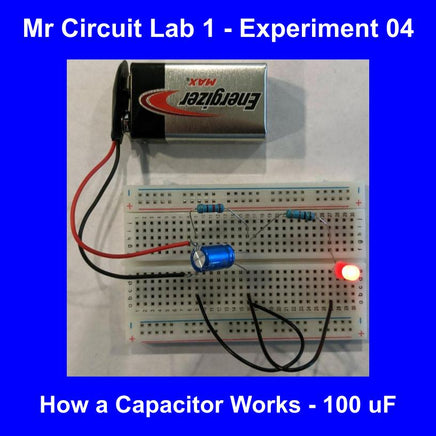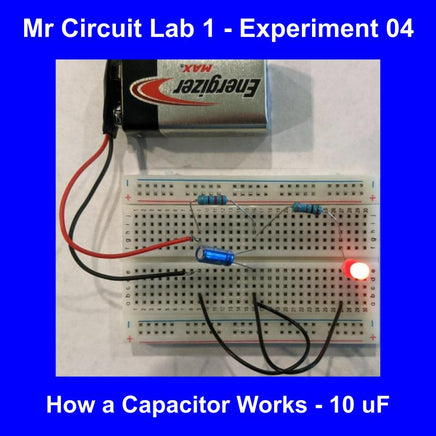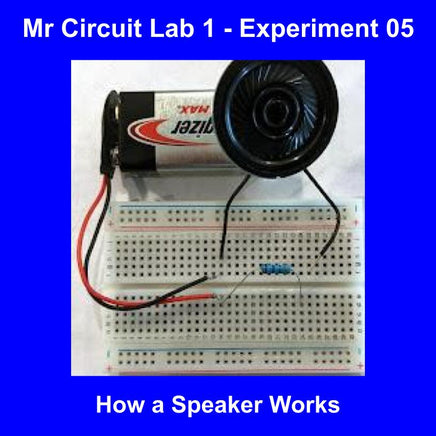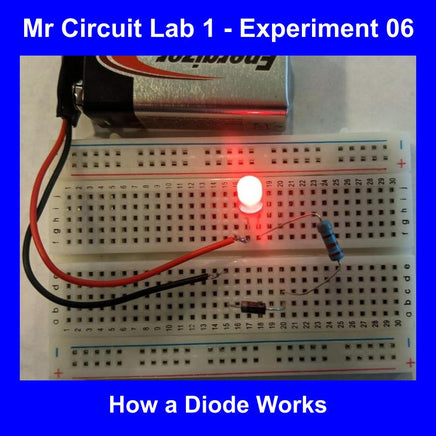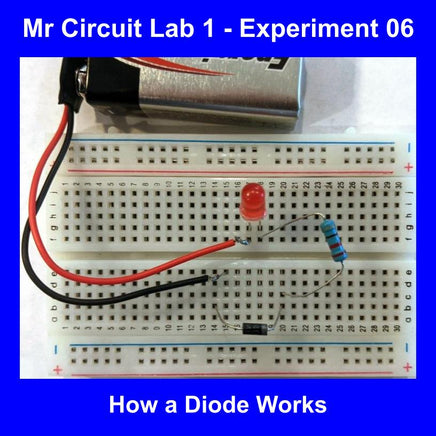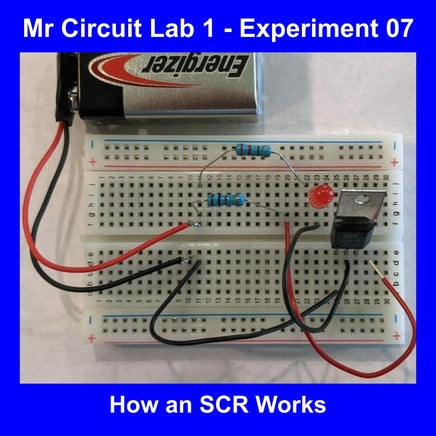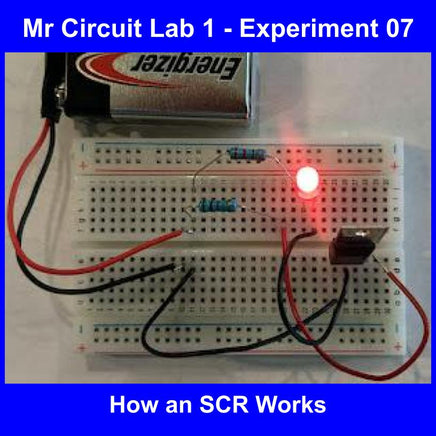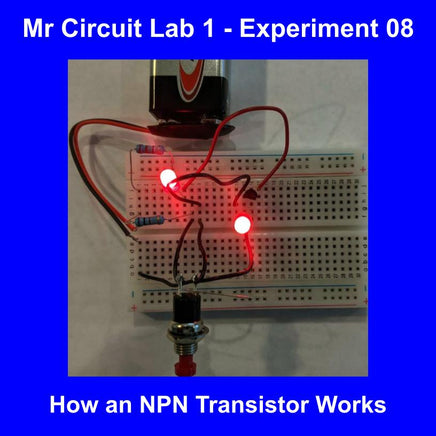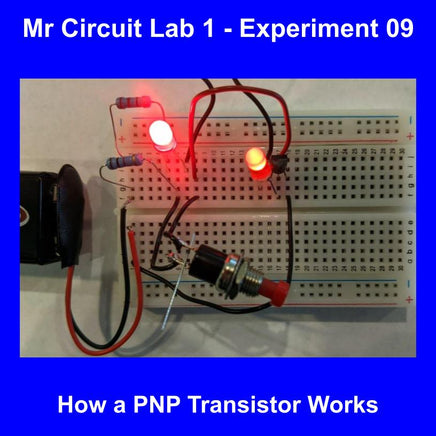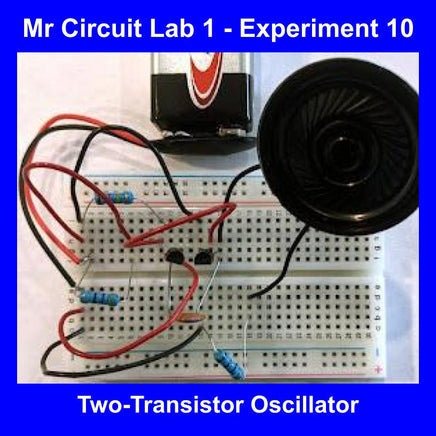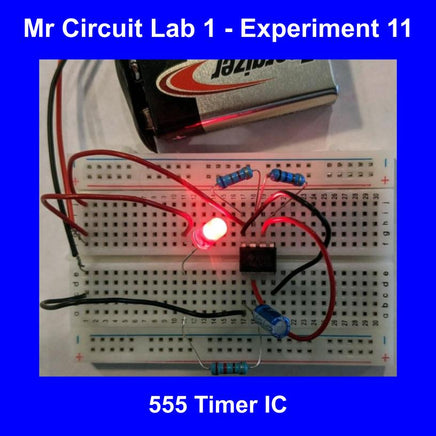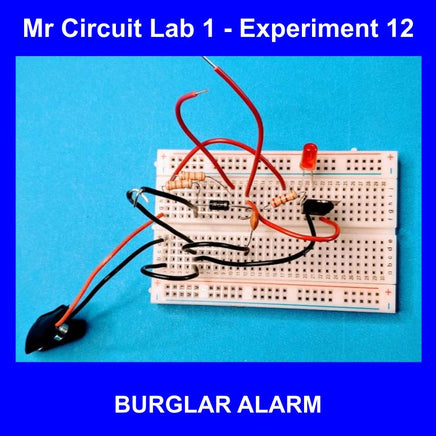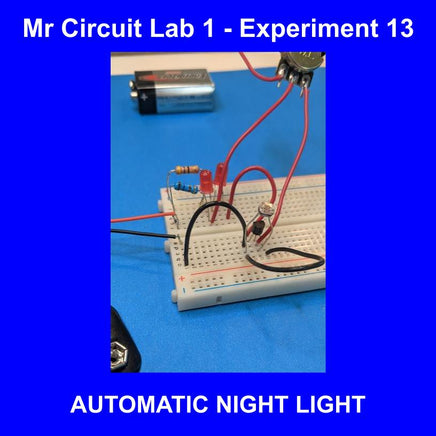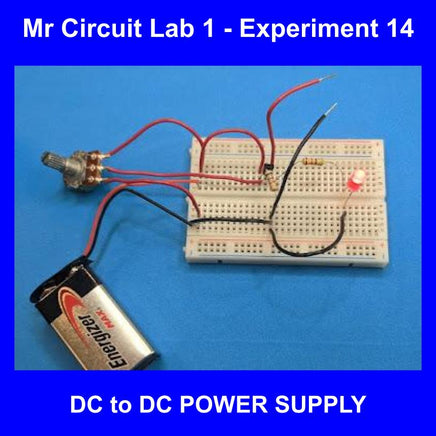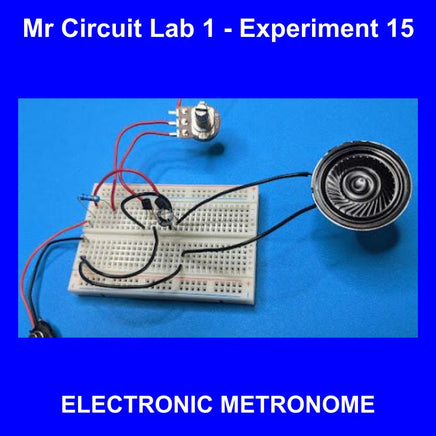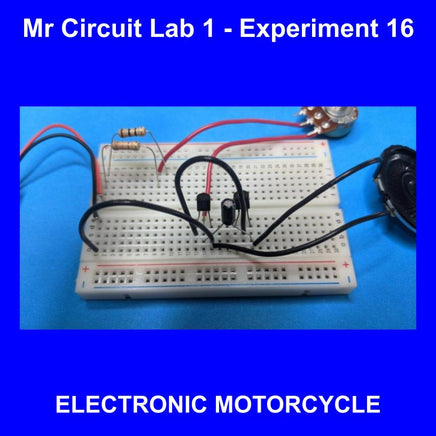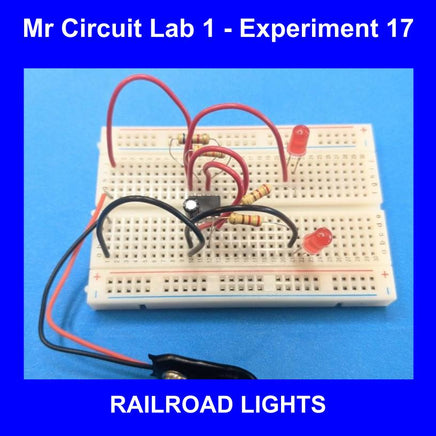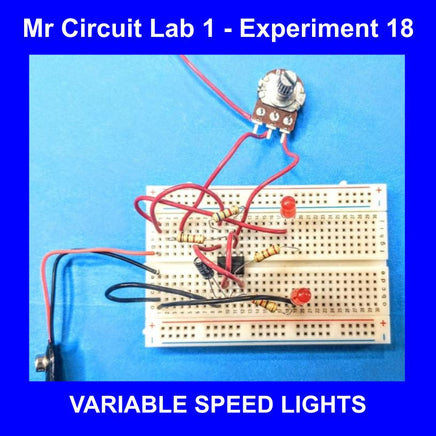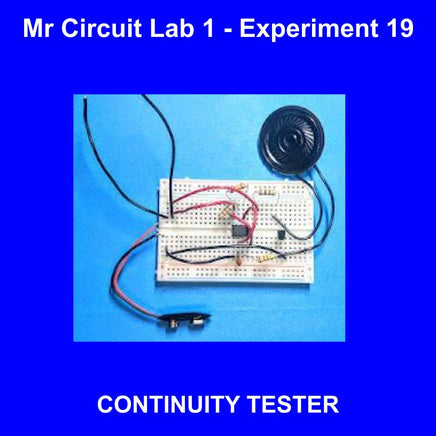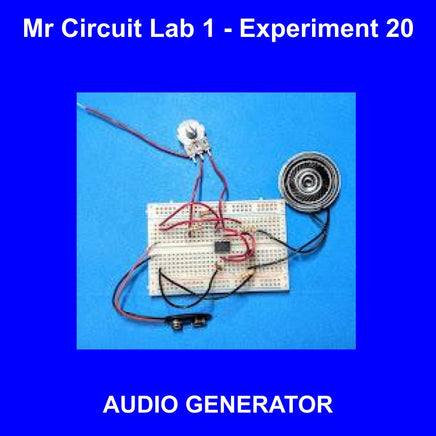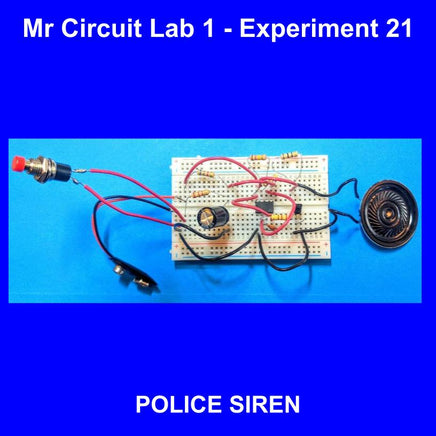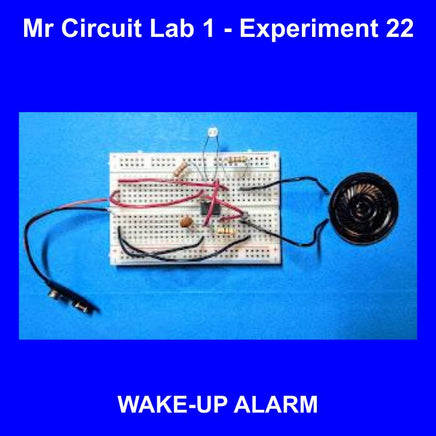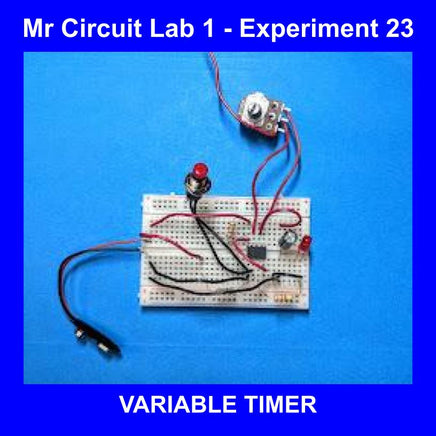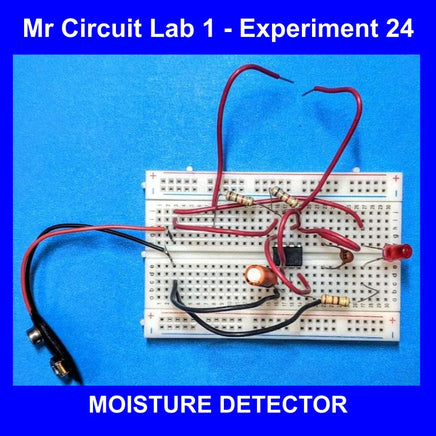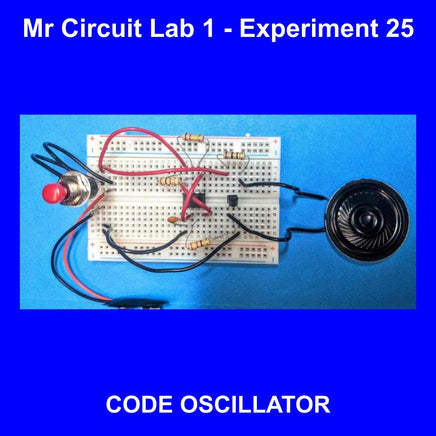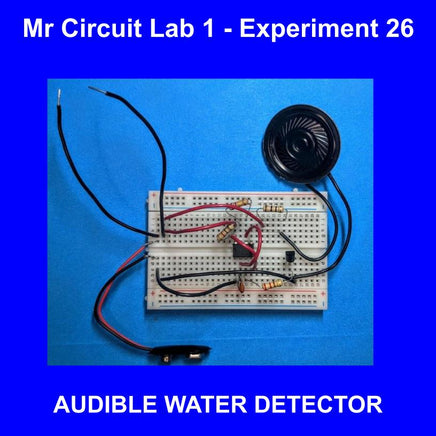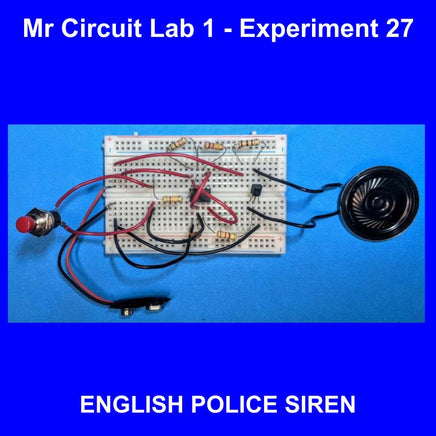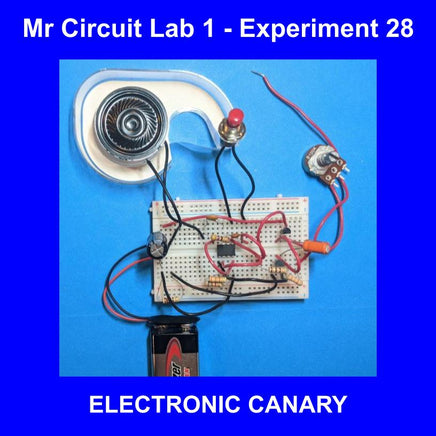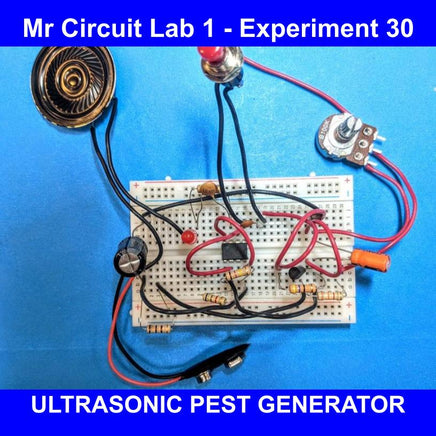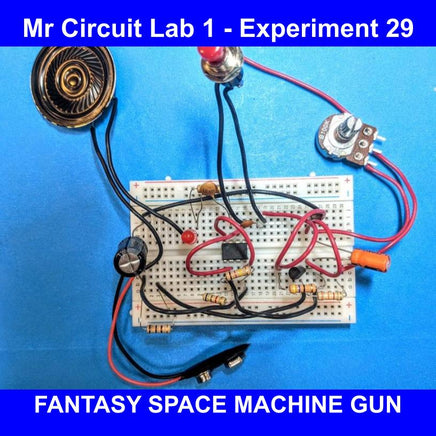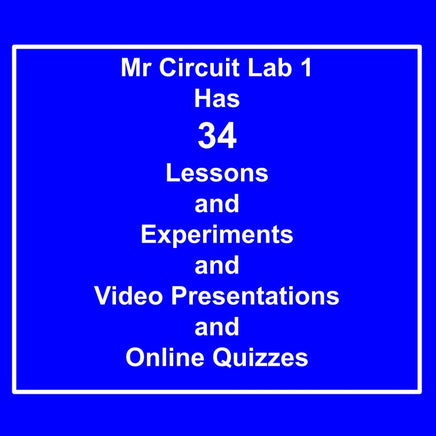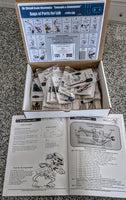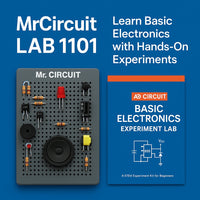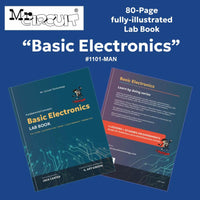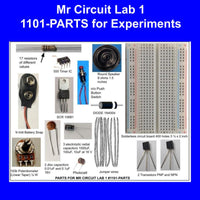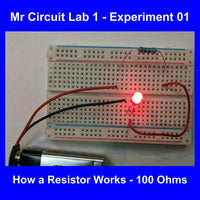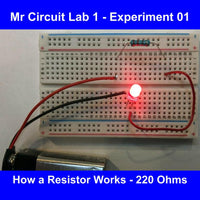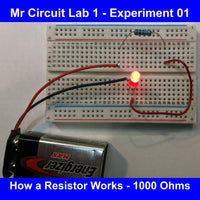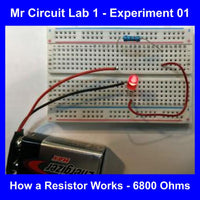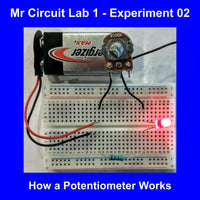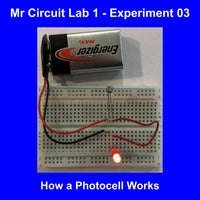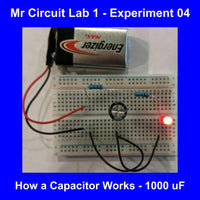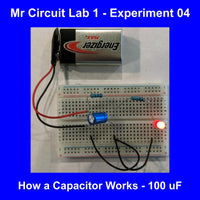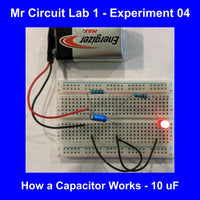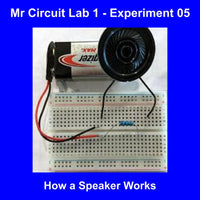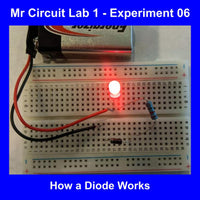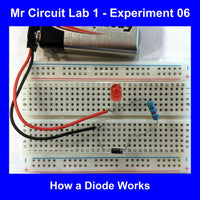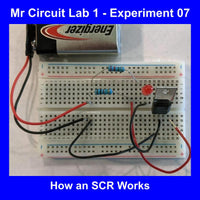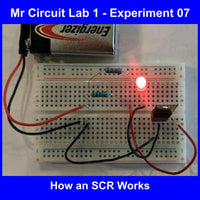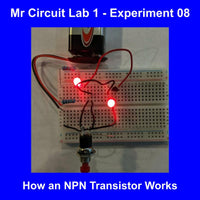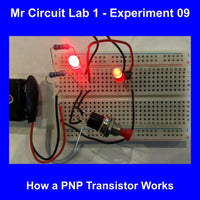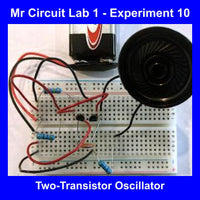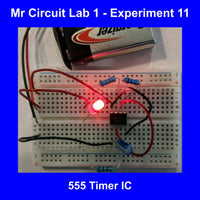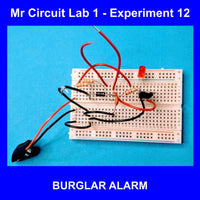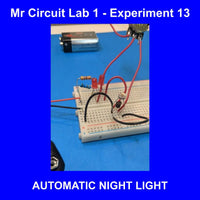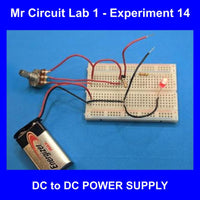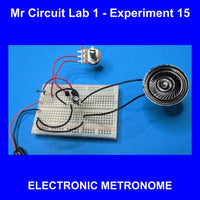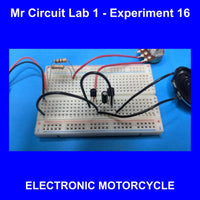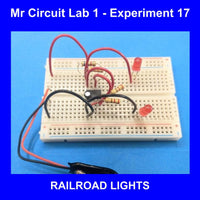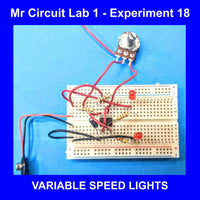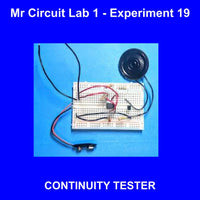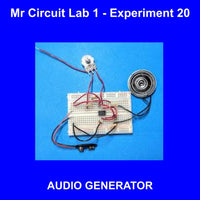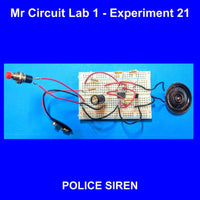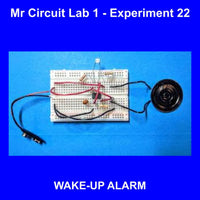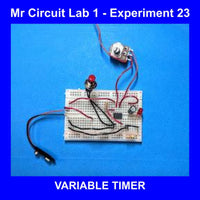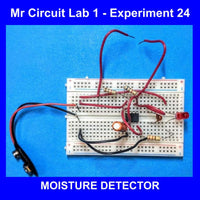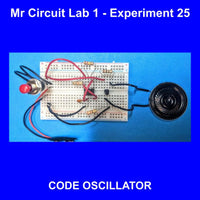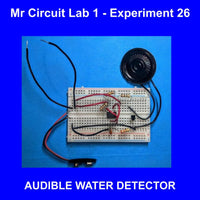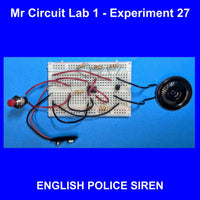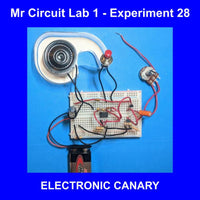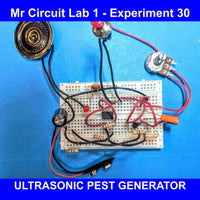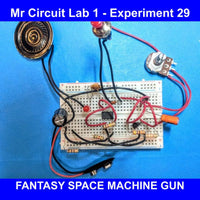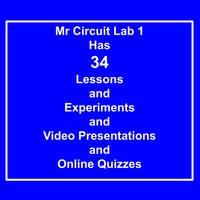Mr Circuit CTE Basic Electronics Lab 1 #1101-LAB
This is it.
The best lab you will ever use with your technology students!
Buy a classroom set of these labs today and sit back and enjoy the results!
No soldering required: Exciting experiments for students to assemble on a solderless circuit board. Perfect for STEM and CTE students as well as future engineers and technicians.
The experiments are reusable so many students can use the same lab over and over. Replacement parts are available for purchase which will save you money.
Understanding basic electronics is essential in our world where everything in controlled by electricity and electronics. Here is a way to learn it. Congratulations! This is the world's most popular basic electronics hands-on lab. 1000's sold *** And, because Mr Circuit Labs are reusable, you can offer real electronics technology training to your students for a very few dollars per student. Also remember that there are online lessons and quizzes that go along with this lab at https://mrcircuittech.com/mrcirciuitmenu1/
This is the best product for learning and teaching electronics technology to HVAC, AUTOMOTIVE, ROBOTICS, DRONES, HAM Radio, Electrical Engineering Technician, and STEM classes.
CLICK HERE to view the complete Mr Circuit Lab Experiment Book as a pdf Flip Book
The lab book included in each lab is printed on beautiful long lasting 60lb glossy pages with a full-color cover. (It can take 30 seconds to download. Be patient, it is worth it. Use arrows at edges of screen to navigate from page to page through the book.)
Ignite your students' interest in electronics technology with this Mr. Circuit Lab. This hands-on STEM lab is the perfect way to introduce middle and high school students to the fundamentals of electronics, making complex concepts engaging and accessible.Easy on you and easy on your students. Each lab comes with all the parts necessary to do all the experiments and lessons. A fully illustrated lab book is included as well as online lessons and quizzes. The lab is reusable so order a classroom set and use them year after year. Replacement parts and manuals are available.
The Mr Circuit Electronics Labs are MORE THAN just “assemble the circuit and make it work”. These labs were designed to give students actual hands-on experience in the fields of Science, Technology, Engineering, Art, and Math.
Included in each lab is a Solderless Circuit Board, the same type that is used in industry.
Students use PROBLEM SOLVING SKILLS and also COLLABORATE with other students to solve circuit testing problems. The function and purpose of each electronic part is explained so that the student really understands how each circuit works.
CREATIVITY and DESIGN are used by students to come up with new and innovative circuits using the parts provided in the lab. They can use their art programs to create the circuit diagrams and packaging for new products they create.
These labs can be done in any classroom because all the experiments are powered by a 9-volt battery. No extra equipment, power supplies, or tools are necessary.
ASSESSMENT:
Each lab includes written lessons, online video presentations, online step-by-step construction diagrams, online quizzes, and written quizzes.
The Mr Circuit Labs are student-driven, stand-alone educational training that can be done as a class or individually. There are 34 lessons/experiments which take an average of 30 minutes each.
Students learn about resistors, capacitors, potentiometers, diodes, transistors, SCR's, speakers, integrated circuits, and more.
Includes Cloud-based multimedia content that tracks student progress and comprehension.
Companies like Google say that they want skill-based hires because they are more successful in the modern workspace.
We accept Credit / Debit Cards or Public School Purchase Orders.
Why Teachers Love the Mr. Circuit Lab #1101-LAB:
- Hands-on Learning: Forget boring textbooks! Students learn by doing, building 30 different circuits and directly experiencing how electronic components work.
- STEM Focused: Aligned with STEM education principles, this lab encourages problem-solving, critical thinking, and collaboration.
- Comprehensive Curriculum: This isn't just a box of parts! The Mr. Circuit Lab 1 includes cloud-based lessons, quizzes, and a Certificate of Training upon completion, providing a structured learning experience for your students.
- Real-World Skills: Students gain valuable skills applicable to various fields, including robotics, drones, automotive, and computer technology.
- Proven and Popular: Used by tens of thousands, this lab has a strong track record of success in launching students' interest in electronics.
Designed and Assembled in the USA.
We accept Credit / Debit Cards or Public School Purchase Orders.
Thank you from Gary Gibson, author and educator
Mr Circuit Technology 805-295-1642 Gary@MrCircuitTechnology.com
Table of Contents for Mr Circuit Basic Electronics Experiment Lab (#1101-LAB)
Lesson #1 How a RESISTOR Works
Lesson #2 How a POTENTIOMETER Works
Lesson #3 How a PHOTOCELL Works
Lesson #4 How a CAPACITOR Works
Lesson #5 How a SPEAKER Works
Lesson #6 How a DIODE Works
Lesson #7 How an SCR Works
Lesson #8 How an NPN bipolar Transistor Works
Lesson #9 How a PNP bipolar Transistor Works
Lesson #10 How a Two-Transistor Oscillator Works
Lesson #11 How a 555 Timer Integrated Circuit Works
Lesson #12 Build a BURGLAR ALARM Circuit
Lesson #13 Build an AUTOMATIC NIGHT LIGHT Circuit
Lesson #14 Build a DC TO DC POWER SUPPLY Circuit
Lesson #15 Build an ELECTRONIC METRONOME Circuit
Lesson #16 Build an ELECTRONIC MOTORCYCLE Circuit
Lesson #17 Build a RAILROAD LIGHTS Circuit
Lesson #18 Build a VARIABLE SPEED LIGHTS Circuit
Lesson #19 Build a CONTINUITY TESTER Circuit
Lesson #20 Build an AUDIO GENERATOR Circuit
Lesson #21 an ELECTRONIC POLICE SIREN Circuit
Lesson #22 Build a WAKE-UP ALARM Circuit
Lesson #23 Build a VARIABLE TIMER CIRCUIT Circuit
Lesson #24 Build a MOISTURE DETECTOR Circuit
Lesson #25 Build a CODE OSCILLATOR Circuit
Lesson #26 Build an ELECTRONIC POLICE SIREN Circuit
Lesson #27 Build an ENGLISH POLICE SIREN Circuit
Lesson #28 Build an ELECTRONIC CANARY Circuit
Lesson #29 Build a SPACE MACHINE GUN Circuit
Lesson #30 Build an ULTRASONIC PEST REPELLER Circuit
Upon completion of this lab, you will be able to:
Draw an atom and label each element.
Describe electron flow in a simple circuit.
Draw a simple circuit schematic and identify the elements required for current to flow.
Draw and identify basic electronics symbols.
Read the Resistor Color Code and determine the values of resistors.
Discuss the concepts and principles of a solderless circuit board.
Construct circuits on a solderless circuit board.
Correctly read the values of ceramic disc and electrolytic capacitors.
Select the correct components and build an electronic circuit.
Build a basic circuit using a potentiometer.
Understand and use a photocell in an electronic circuit.
Construct a circuit using a schematic diagram.
Understand how and when to use a capacitor in an electronic circuit.
Use a transducer like a speaker to make sounds from electron flow in a circuit.
Know why you hear a clicking sound in a speaker when you connect and disconnect a circuit.
Understand how the Gate in an SCR works and how to use it in an electronic circuit.
Build a two-transistor oscillator with a PNP and an NPN transistor.
State the function of a resistor and recognize its schematic symbol.
State the function of a capacitor and recognize its schematic symbol.
State the function of a power diode and recognize its schematic symbol.
State the function of bipolar transistors and recognize its schematic symbols.
State the function of a switch and recognize its schematic symbol.
Understand the uses of a 555 Timer Integrated Circuit and how to use it to make an oscillator.
Build an SCR Checker on a solderless circuit board.
Build an NPN and PNP bipolar Transistor Checker.
Build a Diode checker on a solderless circuit board.
Troubleshoot electronic circuits by comparing the schematic to the physical circuit.
State the 11 most common electronics components in use in electronics and their functions.
Build a Variable Timer, Moisture Detector, Audio Generator, and more.
Order today! Your students will love it.
